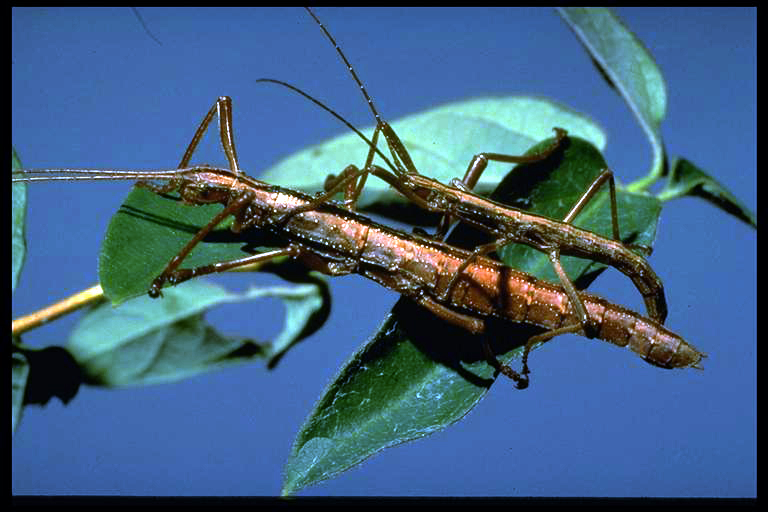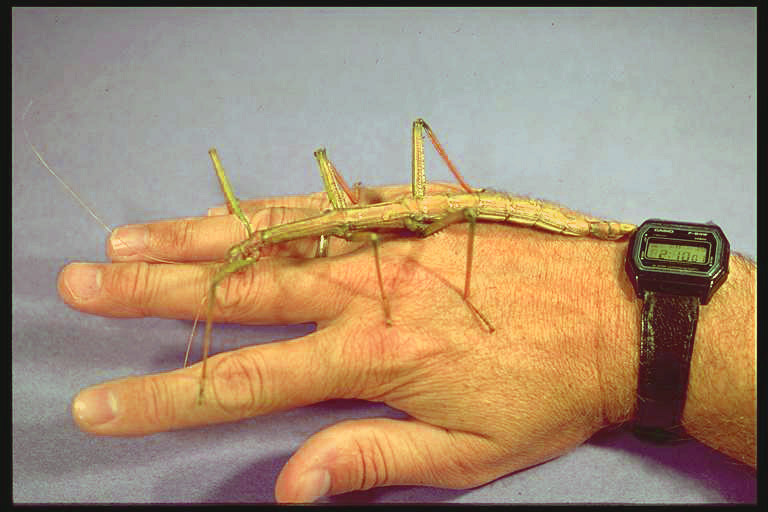
Walkingsticks, Anisomorpha sp. (Phasmida), mating. Photo by M. E. Merchant.
Common Name: Walkingstick
Scientific Name: Varies
Insect Order: Phasmida
Description: Walkingsticks are slow moving, wingless, and stick-like, with long, slender legs and long thread-like antennae. Their color, form and behavior allow them to hide from predators. They vary in color from green to brown and may grow to be almost 4 inches long (Diapheromera femorata (Say)) although one Texas species grows to almost 7 inches long (Megaphasma dentricus (Stål)), the longest insect in the United States!
No other species can be confused with walkingsticks. They do not have front legs modified for capturing prey as do praying mantids and the thread-legged bug (Heteroptera: Reduviidae).
Life Cycle: In the fall, black or brown seed-like eggs are dropped by females to the litter below host plants. Nymphs hatch in the spring and develop through several stages (instars) before becoming sexually mature adults. One generation is produced each year. Walkingsticks occasional defoliate some trees and shrubs.

Walkingstick, Megaphasma dentricus (Stal) (Phasmida), female. Photo by Drees.
Habitat, Food Source(s), Damage: Nymphs and adults have chewing mouth parts and feed on leaves. In the spring, young nymphs feed mainly on understory shrubs. Later instar nymphs and adults feed throughout the crown of host plants. Host plants include apple, basswood, birch, dogwood, hackberry, hickory, locust, oak, pecan and wild cherry. Outbreaks are cyclic.
For additional information, contact your local Texas A&M AgriLife Extension Service agent or search for other state Extension offices.
Literature: Borror et al. 1989; Johnson & Lyons 1988; Swan & Papp 1972. Reviewed Burke 3/96.